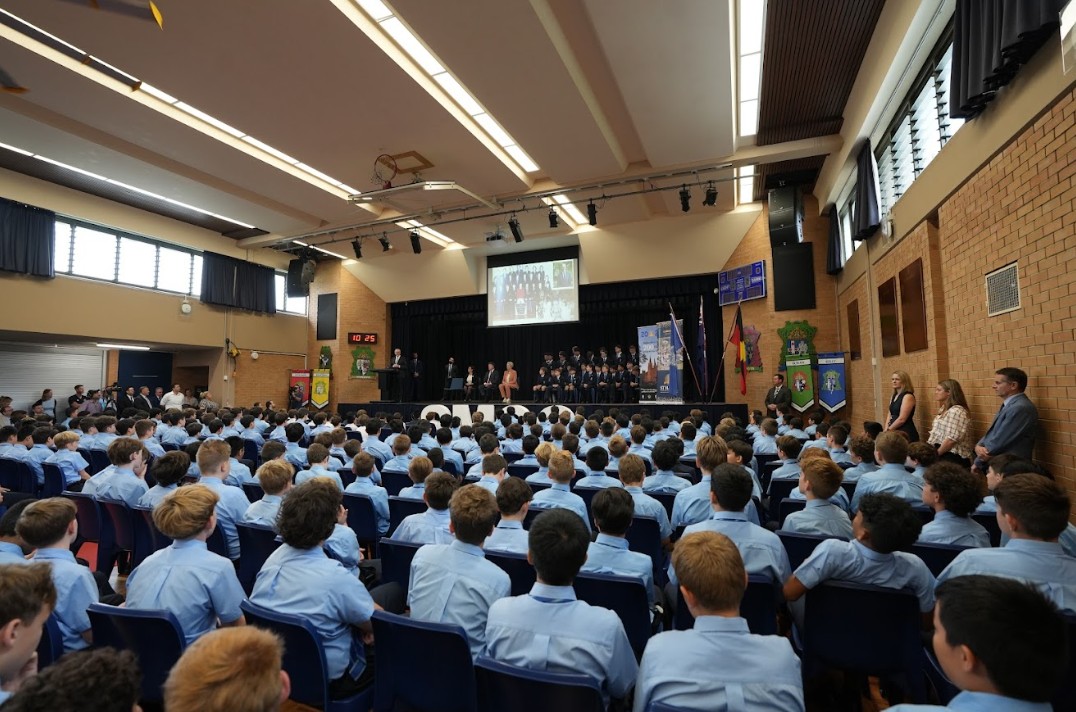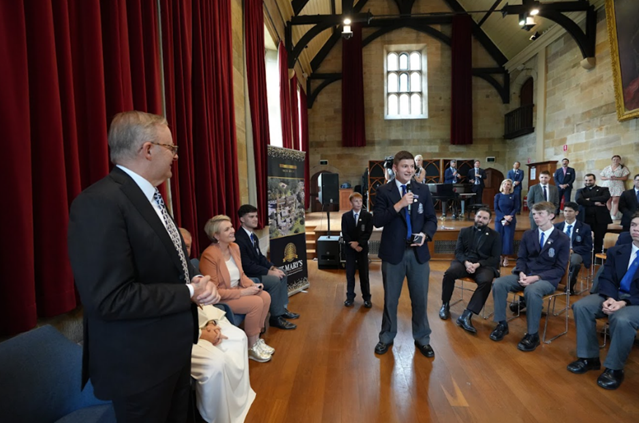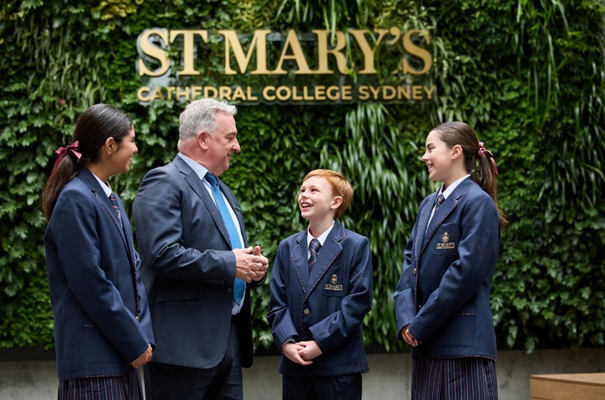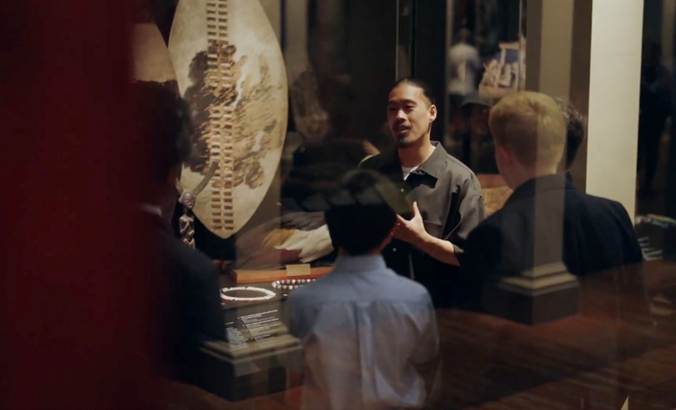
In a time shaped by AI, technological convenience and many other digital distractions, St Mary’s Cathedral College is embracing something different: practical wisdom.
As part of their Liberated Learning design, the College’s innovative Phronesis Program embeds wellbeing and learning approaches across all year levels, aiming to build Character through virtue acquisition. Phronesis contains student modules that sharpen critical thinking, as well as the human dimensions of ethics and civic engagement.
The aim is simple – think well, communicate with integrity and contribute as compassionate, informed citizens.
“This whole-school framework that integrates wellbeing, learning, and character formation across every stage of a student’s journey,” Principal, Kerrie McDiarmid told The Educator.
‘It defines the deeper purpose of education’
McDiarmid said character education at St Mary’s is not an isolated initiative.
“It defines the deeper purpose of education and aligns with our Mission ‘to know and love Christ through learning’,” McDiarmid said. “Across Junior, Middle and Senior Schools, students engage in experiences that cultivate agency, moral responsibility and a commitment to the common good.”
From foundational learning in the Junior School, to integrated inquiry in the Middle School, and leadership development in the Senior School, the Phronesis Program equips students to grow into the best version of themselves.
“It forms the foundation of a flourishing school culture, shaping heart, mind and spirit,” McDiarmid said.

‘A reimagined model of student leadership’
Since its launch, the Phronesis Program has become a cornerstone of College life, shaping how students learn, lead, and live with purpose.
A standout expression of this vision, says McDiarmid, is the transformation of the traditional SRC into the Student Parliament, officially launched by College alumnus and Prime Minister Anthony Albanese.
“This reimagined model of student leadership provides a dynamic platform for active citizenship, where students exercise learner agency and engage in meaningful, real-world ethical discourse,” she said.
“At a recent AI Symposium, Parliament members debated the implications of artificial intelligence in education and society, demonstrating applied ethics, critical thinking, and moral discernment in action.”
Across the College, students are increasingly confident in addressing complex issues such as equity, sustainability, and digital responsibility, McDiarmid said.
“We continue to recognise the importance of student voice, choice and agency. The Student Parliament allows our students to make a difference within the College, their communities, and the wider world.”
Connecting knowledge with virtue
Modules such as Active Citizenship and Aesthetic Appreciation help students practice knowledge-driven communication and civic-minded leadership in a digitally saturated world.
“Active Citizenship fosters collaboration, compassion, and respectful communication, encouraging meaningful engagement both online and offline,” Belinda VanderGert, Assistant Principal of Liberal Arts said.
“It cultivates a sense of responsibility and service, grounding digital interactions in ethical awareness.”
VanderGert said Aesthetic Appreciation invites reflection on Truth, Beauty, and Goodness, deepening understanding of human dignity and inspiring purposeful dialogue.
“These modules connect knowledge with virtue, enabling students to lead with empathy, clarity, and conviction.”
‘A Liberal Arts education for today, and for tomorrow’
Another innovative way in which St Mary’s Cathedral College is helping its students thrive is by aligning these virtues with a whole-school structure that sequences learning from K–12, so each stage builds on the last and students grow into confident, ethical leaders as complexity increases.
Their innovative ‘Three Schools’ model, which comprises the Junior School (Years K–4), Middle School (Years 5–8), and Senior School (Years 9–12), is shaped by a contemporary Liberal Arts philosophy that responds to the needs of students in a rapidly changing world.
“This approach draws inspiration from the enduring wisdom of the trivium, grammar, logic, and rhetoric, while reimagining it for today’s learners. It is a dynamic, future-focused model that equips students with the intellectual agility, ethical grounding, and creative confidence needed to thrive in complexity,” McDiarmid said.
In the Junior School, the ‘grammar’ phase, students explore foundational skills and knowledge, cultivating wonder. In the Middle School, the ‘logic’ phase, they engage in inquiry and interdisciplinary thinking. By the Senior School, the ‘rhetoric’ phase, they begin to specialise and apply their knowledge in complex, real-world contexts and begin to discern their place in the world
“Our Liberated Learning model is not a static framework, it is a living, responsive approach to education that evolves alongside our students and the world they are preparing to shape,” McDiarmid said.
“It equips young people not just with knowledge, but with the capacity to think deeply, act ethically, and engage creatively. It is a Liberal Arts education for today, and for tomorrow.”

Purposeful, action-oriented pedagogy
The College’s commitment to innovative learning comes to life most visibly in the middle and senior years. Here, learning is not just subjects but a disciplined way of noticing, questioning and serving.
“Our Middle School approach is an action-oriented pedagogy and deeply connected to the world around our students,” David Timillero, Assistant Principal of Middle School, said. “Through integrated learning, they think critically, collaborate creatively, and apply knowledge in socially responsible ways.”
A standout initiative is the College’s ‘Making a Difference’ Projects, where students collaborate with real partners, to communicate for impact and design for positive change.
Recently, Stage 4 students partnered with UNSW and Vertikal to design a vertical green space for the school, inspired by the theme Curating Beauty for Human Flourishing.
“Students explored sustainability, wellbeing, and urban design through the lens of Gospel values and Laudato Si,” Timillero said. “Working with academics and industry experts, they transformed a design brief into a living expression of stewardship and care for our common home.”
Timillero said this initiative exemplifies how Middle School students are not just learners, but active contributors to the common good.

Senior School: Reshaping Learning for Engagement
In 2024 St Mary’s celebrated its bicentenary and as part of the celebration the College undertook a project in partnership with the Australian Museum.
McDiarmid said this was a milestone that not only honoured the College’s history but exemplified its commitment to a vision for learning in the Senior School.
“This strategic partnership saw Stage 5 students working behind the scenes with the curators and museum experts learning how the museum curates a story,” she said.
“They brought this knowledge, understanding and skills back to the College turning the hall foyer of the College into a mini museum celebrating and referencing the rich history of St Mary’s Cathedral College for the past 200 years.”
Students will continue this narrative through a bespoke Stage 5 elective, where students will continue to build the museum using a variety of exhibition formats, exploring and expressing key themes. These works will also be shared with alumni and the broader College community.
“This project transforms students into curators of their own community’s narrative, challenging them to apply their learning with purpose, creativity, and insight,” McDiarmid said.
“In doing so, they embody the College’s vision of forming articulate, morally aware, and future-focused leaders, capable of shaping culture and contributing meaningfully to the world around them.”
A vision for education that shapes the future
At St Mary’s Cathedral College, education is more than academic achievement, it is a formation of character, conscience, and community. Through the Phronesis Program and the Liberated Learning model, the College is redefining what it means to learn in the 21st century: connecting knowledge with virtue, leadership with service, and innovation with timeless wisdom. In a world increasingly shaped by technology and complexity, St Mary’s continues to cultivate students who think deeply, act ethically, and lead with purpose – ready not only for the future, but to shape it.

